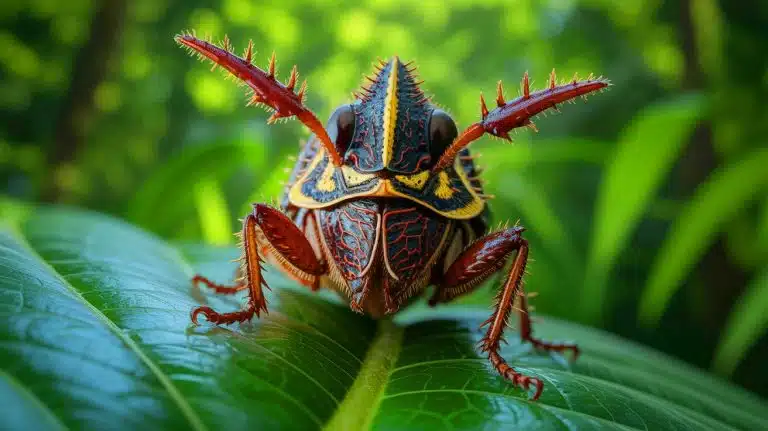| IN A NUTSHELL |
|
Treehoppers, a group of insects known for their peculiar and elaborate body shapes, have long puzzled scientists. With over 3,000 species displaying an array of spiny helmets, ball-like bumps, and trident-shaped structures, these insects defy the usual explanations of camouflage or mimicry. A recent study by researchers at the University of Bristol suggests a novel reason for these bizarre forms: the ability to detect static electricity as an early warning system. This groundbreaking research could potentially reshape our understanding of how body shapes evolve in response to environmental challenges.
The Role of Static Electricity in Evolution
The concept of static electricity influencing evolutionary paths is a relatively new and unexplored area in the realm of terrestrial animals. Electroreception is well-documented in aquatic species such as sharks and electric fish, yet its presence in land-dwelling insects like treehoppers has rarely been considered. The study from the University of Bristol posits that static electricity, often generated through contact or movement, could play a crucial role in shaping an animal’s morphology.
While the study provides compelling evidence that treehoppers can detect electric fields, it stops short of proving that static sensing was the driving force behind the evolution of their distinct body shapes. However, the researchers are optimistic that future studies could establish a direct link between the treehoppers’ morphology and their electrical ecology, such as interactions with predators carrying specific static charges.
Experimental Evidence of Electrostatic Sensitivity
To test their hypothesis, the researchers measured the electrostatic charges of various insects that interact with treehoppers. Predatory wasps, natural enemies of treehoppers, were found to carry significant static charges. In contrast, stingless bees, which sometimes protect treehoppers, had less threatening charges. This established a baseline for understanding the electrical environment in which treehoppers exist.
The researchers then exposed treehoppers to weak electric fields in a controlled setting to observe their reactions. The insects’ movement away from these fields confirmed their sensitivity to electrostatic forces. This behavior implies that treehoppers could use their body shapes to enhance their ability to detect such forces, potentially giving them an evolutionary advantage in evading predators.
Computational Modeling and Morphological Insights
The study’s most technical aspect involved creating 3D digital models of treehoppers with various body shapes. By simulating electric fields around these models, the researchers could assess how different shapes interacted with electrostatic forces. The findings revealed that treehoppers with more exaggerated shapes experienced higher electric field intensities near their surfaces compared to those with simpler forms.
This suggests that the elaborate structures on treehoppers’ bodies might serve to amplify electrostatic signals, making them more sensitive to changes in their environment. Such sensitivity would be particularly beneficial in detecting the approach of predators, providing a potential evolutionary advantage.
Implications for Understanding Body Shape Evolution
If the link between static electricity and body shape evolution is confirmed, it could revolutionize our understanding of morphological development in insects. Dr. Sam England, one of the study’s authors, emphasizes the potential for this research to inspire investigations into other organisms with unusual shapes. The implications extend beyond treehoppers to a variety of insects, spiders, and even plants with extreme forms.
While the study marks a significant step forward, it also opens the door for further research. By exploring the relationship between electrical ecology and morphology, scientists can gain a deeper understanding of how environmental factors influence evolutionary paths. This insight could eventually lead to new perspectives on the development of life on Earth.
As researchers continue to explore the connection between static electricity and morphological evolution, new questions arise about the potential applications of this knowledge. Could this understanding of electrostatic sensitivity lead to innovations in technology or conservation efforts? How might it change our approach to studying and preserving biodiversity in a rapidly changing world?
Did you like it? 4.4/5 (21)







Wow, I never knew insects could be so electrifying! ⚡️
This study is shocking! Could this mean other insects have similar abilities? 🤔
The article is interesting, but I’m skeptical about the claims. How reliable is this study?
I always thought their shapes were just for show. Fascinating discovery!
Can this research be applied to other creatures or just treehoppers?
Why did it take so long for scientists to figure this out? Seems obvious now!
Thanks for this enlightening piece. Nature never ceases to amaze me!
Are there any practical applications for this knowledge, or is it just academic?
Haha, electric bugs! What’s next, magnetic ants? 😂